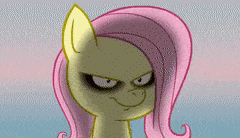27284851
Introduction to Electricity (Mod. 1 pt2)
Description
Flashcards by That Yeti Dog Person, updated more than 1 year ago
More
Less

|
Created by That Yeti Dog Person
about 4 years ago
|
|
Resource summary
| Question | Answer |
| _____ is a natural force produced by the movement of electrons. | Electricity |
| The most common natural source of electricity is _____. | lightning |
| The first truly successful application of electricity was made in 1837 with the _____. | telegraph |
| The _____ was invented by Alexander Graham Bell and was patented in 1876. | telephone |
| The _______ was invented by Thomas Edison in 1878. | incandescent light |
| A _____ is defined as a complete electrical path. | circuit |
| A typical circuit includes these four components: ____, ____, ____, and a ____. | power source, conductors, load, switch |
| The _____ in a circuit are the wires that carry the electricity. | conductors |
| In a circuit, the ____ is a device, such as a light or appliance, that we want to run with electricity. | load |
| In a circuit, the ____ is the device we use to turn the electricity flow on and off. | switch |
| When the switch is turned off in a circuit, the path of the circuit is broken. This is called an ______. | open circuit |
| When the switch is turned on in a circuit, it completes the circuit. This is called a ______. | closed circuit |
| _____ are tiny atomic particles that have a negative electrical charge, | Electrons |
| The end of a battery that's marked with a negative sign (-) is called the ______. | negative terminal |
| The end of a battery that's marked with a positive sign (+) is called the ______. | positive terminal |
| The negative terminal of a battery has _____ electrons and the positive terminal has _____ electrons. | too many, too few |
| The flow of electrons through a circuit is called ______. | electric current |
| All matter in the universe is formed from 100 or so different substances called _____. | elements |
| The _____ is the smallest particle of a element. | atom |
| All atoms are made up of atomic particles called ____, ____, and ____. | protons, neutrons, electrons |
| _____ are the smallest type of atomic particle. | Electrons |
| _____ are heavier than electrons and have a positive charge. | Protons |
| _____ have no electrical charge at all. (they are neutral) | Neutrons |
| A _____ atom is the simplest of atoms. It has 1 electron and 1 proton. | hydrogen |
| The center of an atom is called the _____. | nucleus |
| The copper atom contains ___ electrons and ___ protons. | 29, 29 |
| Electrons orbit the nucleus of an atom in many layers called _____. | shells |
| _______ orbit the nucleus in the outermost electron shell and are easily dislodged from their orbit. (copper atoms are a good ex.) | Free electrons |
| A common way to remove electrons from their orbit is _____ (rubbing). | friction |
| Any substance in which electrons can move freely is a _____. | conductor |
| George Ohm was the first to discover the existence of ____, ____, and ____. | conductors, insulators, resistors |
| Two of the best known conductors of electricity are ____ and ____. | copper, silver |
| _____ means how well a material carries electricity. | Conductivity |
| _____ is commonly use in resistors because its atom has 4 electrons in its outermost shell. | Carbon |
| The ohm measurement was named after _______. | George Ohm |
| _____ is a better conductor than copper because its atom's free electron is one more shell farther away from its nucleus than copper's. | Silver |
Want to create your own Flashcards for free with GoConqr? Learn more.
